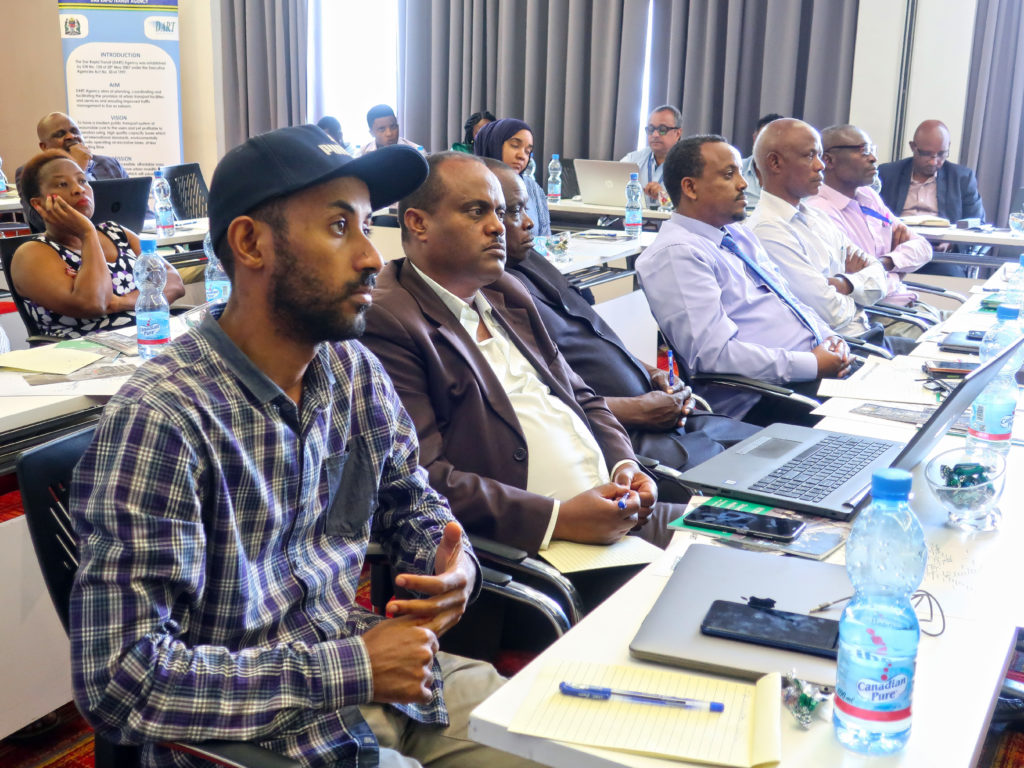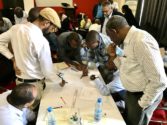
December 20, 2019
Scaling up sustainable urban mobility in East African cities.
Transport and urban development practitioners from Kenya, Uganda, Tanzania, Rwanda, and Ethiopia converged in Dar es Salaam, Tanzania, to share experiences, learn from each other, and discuss best practices in sustainable mobility at the first annual conference under Growing Smarter, a project led by ITDP and the United Nations Human Settlements Programme (UN-Habitat) with support from the International Climate Initiative (IKI).
Dar es Salaam implemented the first bus rapid transit (BRT) system in the region and is the only city in Africa to win the Sustainable Transport Award (STA). The Dar Rapid Transit (DART) BRT system spans 20.9 km and carries 172,000 passengers per day, offering faster journeys on high-capacity buses. Dar es Salaam’s successes served as an inspiring backdrop for participants’ discussions on how to create vibrant and healthy cities in Africa.
The programme began with a keynote speech, “Cities for people,” by Dr Gil Penalosa, Chair of 880 Cities and former Commissioner of Parks in Bogotá, Colombia. Dr Penalosa discussed the value of making cities work for 8-year-olds and 80-year-olds alike through inviting spaces for walking and cycling and high-quality public transport systems.

After the keynote presentation, panellists discussed the challenge of securing finance for urban transport. A discussion facilitated by Debashish Bhattacharjee from UN-Habitat raised concern about the tendency of governments and development banks to prioritise funding for wider roads and flyovers. Yet new infrastructure for cars simply attracts more vehicles, leading to even more congestion over time. Panellists highlighted the experience of East African cities that have chosen a different course, making deliberate decisions to finance sustainable transport projects.

The need for an equitable allocation of street space was a recurring theme during the deliberations. ITDP gave a presentation on bad and good practices in urban street design, showing examples of current practices from different East African cities. After the presentation, participants conducted pedestrian infrastructure audits at two intersections along Azikiwe St in the city centre. Participants then took part in an interactive exercise where they redesigned both intersections to improve pedestrian safety while incorporating provisions for a future DART station.
Establishing a sustainable urban transport system also requires an integrated approach to land use and transport planning. Planning regulations that prevent compact development in city centres contribute to the proliferation of informal settlements, with the fraction of residents living in informal housing running as high as 70 percent in cities such as Dar es Salaam. The final session explored how cities can adopt equitable planning regulations to incentivise affordable housing and pedestrian-friendly urban design.
In his remarks for the closing of the three-day regional conference, the Permanent Secretary, Regional Administration and Local Government, Tanzania, Eng. Joseph Nyamhanga, pointed out that the meeting was a unique opportunity to learn from the world’s leading experts and practitioners. He urged participants to work toward creating more liveable cities by changing the direction of urban transport development toward a more sustainable future.
Bicycle rides along the BRT corridor.


